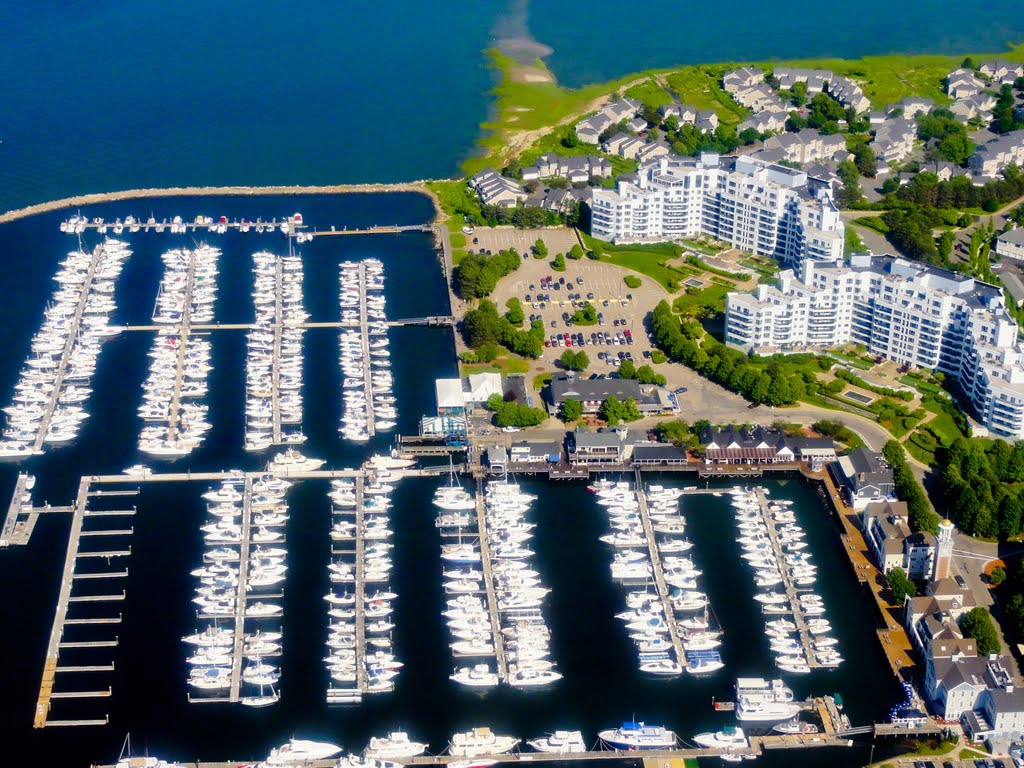Marina Flushing

Description
Water quality within a marina basin depends on how well the basin is flushed, which depends on water circulation within the marina. Water movement is controlled by tides and is influenced by currents formed by the shape of the shoreline and underwater landforms. It is important to understand how manmade structures such as pylons and piers affect the movement of water during a typical tidal cycle, because obstructions to water circulation can affect natural processes such as sediment transport and distribution of dissolved oxygen. These impacts can, in time, affect navigation and marine habitats. Constrictions can also decrease flushing of the cove, and prevent pollutants or excess nutrients from being carried out to sea. Marinas should be designed so that their structures do not significantly restrict the natural circulation of water caused by tidal action. BMPs include:
BMPs for Marina Flushing
- Marina Bottom and Entrance Channel Placement: Try to avoid having bottoms of the marina and their entrance channels that are deeper than adjacent navigable harbor channels. If the marina bottom is significantly below that of the main channel, bottom water exchange might be reduced. This can restrict the flow of dissolved oxygen to waters around the marina and lead to fouling and odor problems.
- Minimize Dead Water in Marina Designs: Dead water develops when bacteria consume all the dissolved oxygen in the bottom waters and the movement of oxygen rich water for replenishment is restricted. Dead water can form in isolated areas under the marina and where marina structures block water flow. Design new marina areas without structures that will lead to the development of dead water areas, thereby ensuring water movement and exchange throughout the entire marina basin and avoiding traps for floating trash and seaweed.
- Open Marina Designs and Wave Attenuators: Consider using open designs and wave attenuators where possible to improve flushing. Open designs avoid the use of structures in bottom waters that restrict water flow. Wave attenuators are structures that dampen wave energy, but still allow water to pass through and into the protected area. Wave attenuators may not suficiently protect the marina in areas subject to significant wave action, and the need for wave protection may make solid breakwaters the only practical alternative for some marinas. Site specific study is required to reach the appropriate solution.
- Promote Flow-Through Currents: If feasible, without compromising wave protection, provide openings at opposite ends of the marina to promote flow-through currents.
- Mechanical Aerators: Use mechanical aerators to improve oxygenation and mixing in marina basins where flushing is a problem, particularly during hot summer months.
References
CZM. 2001. Massachusetts Clean Marina Guide. Massachusetts Department of Coastal Zone Management,
http://www.state.ma.us/czm/marinas/guide/macleanmarinaguide.htm
USEPA. Coastal Nonpoint Pollution Control Program: Program Development and Approval Guidance. EPA 841-B-01-005. United States Environmental Protection Agency,
http://www.epa.gov/owow/nps/